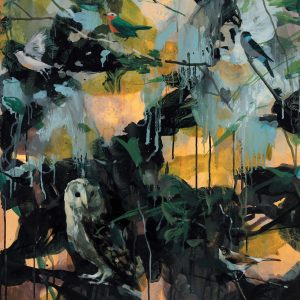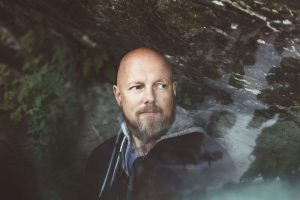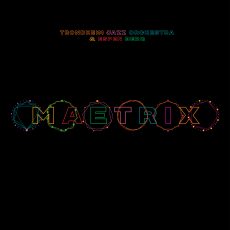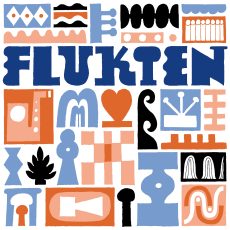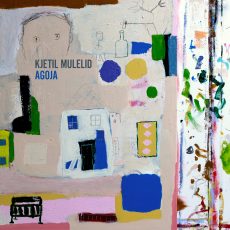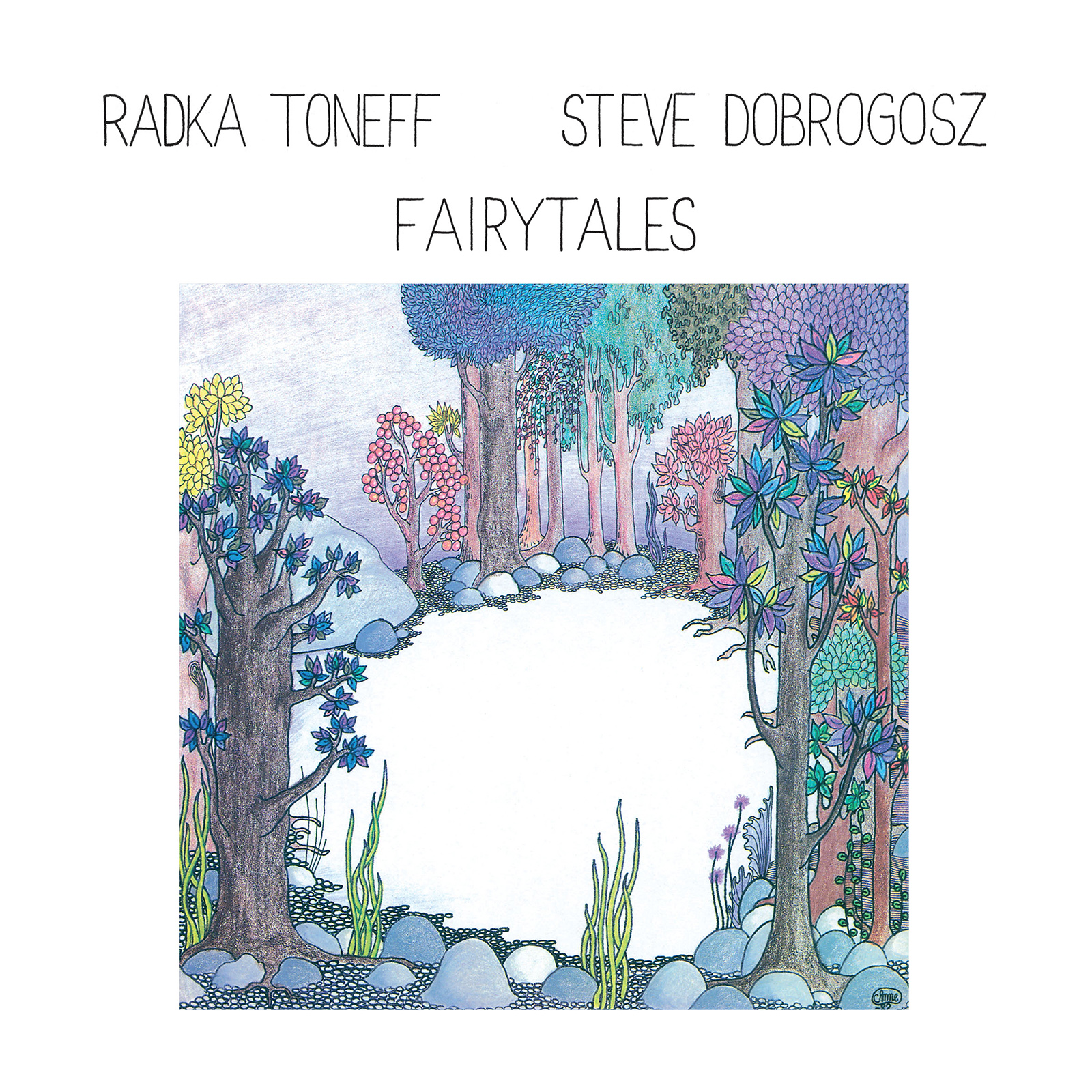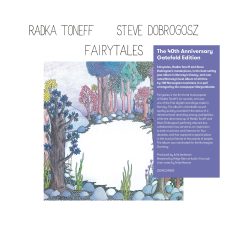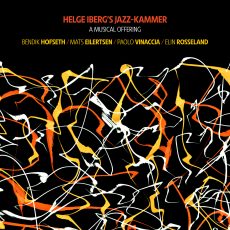‘Miles Ave’. Ingebrigt has always chosen the path of greatest resistance.
Many of his bass playing colleagues reckon playing with gut strings is like trying to run a farm with a horse and cart after you’ve bought a tractor. The sheer willpower and physical effort required to make his instrument sing are clearly audible in the music. Another self-imposed stumbling block is the difficulty of getting work in a foreign country – but Ingebrigt has steadily worked his way towards finally obtaining the holy grail – his very own Green Card. After living for a while in the USA, a combination of music and love led him to Austin, Texas, where he spent the longest time in one place in his whole life. He got married and divorced there. He
formed his band the Young Mothers, and founded the Sonic Transmissions festival. Both the group and the event carry the unmistakable Håker Flaten signature: desire and longing, zeal and melancholy, inspiration and a sweaty passion to communicate. Listen to the moment, two minutes and ten seconds in, when he kicks everything off. The tears will start running down your cheeks two minutes later, as Eivind Nordset Lønning reaches for the heavenly high notes – damn, is this what hope sounds like?
‘Brinken’. In the summer before he began studying at the influential jazz course at Trondheim’s NTNU University, he encountered two of the musicians who have stayed with him his whole life: Håvard Wiik and Paal Nilssen-Love. Together they formed Element, and later Atomic. With Paal and Mats Gustafsson he started the trio The Thing. With these, as well as bands like The Source and Bugge Wesseltoft’s New Conceptions of Jazz, he has circumnavigated the globe many times. Trondheim was where he came face to face with the acoustic bass for the first time. His teacher got him hooked on Looking at Bird, the 1981 album where Niels Henning Ørsted Pedersen and Archie Shepp teamed up to interpret Charlie Parker
tunes. Ingebrigt learnt the whole thing by heart, and became a jazz player in 1992. When he moved to Oslo in 1995, he tried to find peace by joining the Hare Krishna movement, breaking away from his Protestant upringing. He would wake up in the middle of the night to bake bread and meditate in the temple. Eventually he moved on. The journey is the adventure, and all his discoveries while searching for the sound feed into the music. ‘Brinken’ contains traces of Hermeto Pascoal, Ligeti and Gil Evans. Brinken is also his new home in Trondheim – a move precipitated by a confluence of factors connected to the pandemic and his personal life.
‘Håkkåran’. Come home to Håkkåran, urged his family. When it was clear the borders were about to close, he was on a teaching assignment in Javeriana University in Bogotá. After a hasty stop – off in Austin to grab a few belongings from his Miles Avenue apartment, he found himself a couple of hours later sitting on a plane with a one-way ticket to Norway. He initially thought he would be able to return after a few weeks, but instead he found a whole new life beginning. He came back to his 90 year old mother, Åse, still living on the farm he left as a 17 year old prospective musician. His motivation to set out on this neverending journey was partly inspiration and partly a desire to escape. Escape from the pain of feeling
excluded; inspiration to chase down his own unique sound. It started with piano lessons with a strict but friendly neighbor. He didn’t take to the instrument, and quit. He also tried guitar, but quit that too. Eventually he was offered the opportunity to take over as electric bassist in Credo, a children’s gospel choir. His twin brother Åsmund, born 20 minutes after Ingebrigt, also joined as the group’s pianist. The current bassist taught him to play the bass line in Michael Jackson’s ‘Billie Jean’. At the age of 12, he had found his calling. A few years later he was playing in the fusion trio NEON, who were heavily influenced by Mezzoforte and Koinonia. In 1986 they won a local teen band competition. A few seconds can change a life
– such as the few seconds when Palle Danielsson hands over his solo to
Keith Jarrett, three minutes into ‘Country’, on Jarrett’s album My Song. These are seconds which Ingebrigt has listened to over and over again, the same way I have listened repeatedly to the transition from Ingebrigt to Oscar Grönberg in ‘Håkkåran’ – the most romantic track he has ever written. The piece is inspired by the popular Norwegian song ’Skigardsvise’ and the Afro-Colombian currulao tradition, in 6/8 time with the accent on the second and fifth beat. Norwegian pastoral romanticism meets Latin American rhythms – a hybrid that only someone with Ingebrigt’s experience could pull off, I thought, before getting lost in the guitar tones of Oddrun Lilja Jonsdottir, sounding as if Marc Ribot had grown up in Ethopia. After hearing it a few times, you really notice the clapping. Olaf Olsen and Ingebrigt clap in a two-against-three pattern, just the way the bassist learnt it at the Norwegian residential high school he attended after leaving the farm with musical dreams. Everything is connected; everything has its place in the grand scheme.
‘À La Lala Love You’. Chicago, 2006: Ingebrigt relocates for love, but stays for the music. The title is a love letter to Chicago, its music and the musicians who helped form him; but also, perhaps, a tribute to the Pixies track ‘La La Love You’, and to the ride cymbal. Olaf (left channel) and Veslemøy Narvesen (right channel) swing their own patterns on the ride, but never trip each other up. On the contrary, they complete each other’s musical sentences as if they had grown up together, even though this studio date was the first time they had played in the same room. Screw your communications course – dig this instead! They raise the group to a new level, so when the wind gets under Atle Nymo’s wings in one solo, I had to play it three times in a row before I could go on, and then I had to hear Oscar’s synth solo the same number of times as well.
‘Chaos Pad’. It’s not just the uncompromising effort of plucking the gut strings that contributes to the challenges Ingebrigt faces as a musician, but also his occasional crippling stage fright. Even as a teenager, it was such a problem that he considered converting to Christianity in the hope that he could be cured. He still gets performance nerves, but what the faithful get from religion, Ingebrigt gets from music. The chance to lose yourself in a greater power – flow! He finds a use for everything he runs into. The origin of this composition is a series of sketches he had lying around since his composition classes in Trondheim in 1995. He creates something meaningful by putting together elements of his own experience and inspiration. In one of the world’s largest capitals, Mexico City, Ingebrigt has discovered lasting friendships, music and poetry. The city is vibrant, colourful and chaotic, just like this musical tribute that fires on all cylinders. Mette Rasmussen’s freedom-cries are powerful and contagious. I can hear it – a change is going to come!
‘Museumplein’. A tribute to Amsterdam, friends and music. With traces of krautrock and James Blake’s ’I Never Learnt to Share’, (Exit) Knarr opens with a clapping rhythm, as ecstatic as the clapping, chanting Arabian pearl fishers’ songs Ingebrigt loves so much, who dive, holding their breath, in search of the grains of sand that, by a miracle of nature, have grown into exquisite pearls.
This commissioned work culminates in a group blowout, gradually receding into meditative peace. It’s as if the ending is there to reassure me there’s more to come! More to come! The band met for the first time in Studio Paradiso on 23 March. They assembled in the same room and played live. It sounds as though they are standing right in front of us, playing a concert. I am totally sucked in, and even the first time I heard it, I realised this is one of those albums that will be played over and over again. Ingebrigt possesses the same enigmatic qualities as the gut-string-playing legends on whose shoulders he perches: Paul Chambers, Charlie
Haden and Charles Mingus. He goes deep into it without disappearing into long bass solos, instead holding the band together. He sweats for the team. (Exit) Knarr represents new friendships, new music, and yet another important stop on the eternal odyssey the 17 year old Ingebrigt embarked on when he dedicated his life to a quest for sound.
Martin Eia-Revheim










